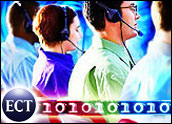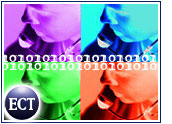
If you could clone your best agent hundreds or thousands of times over, you could ensure that each and every customer calling your contact center receives the same high-quality, friendly and informed response.
In reality, natural language speech self-service is probably the closest and best alternative to delivering cost-effective and customer-friendly service — especially when the product or services mix is complex. When properly designed and implemented in your CRM system, natural language speech recognition can reinforce your brand message, deliver a unique brand experience, and help lock in customer loyalty.
For all its benefits, natural language is not the best solution for every situation. The key to success is first understanding in which environments natural language is most appropriate and where it could deliver the greatest value to an organization.
Natural Language is Ideal for Solving Complexity
Basic integrated voice recognition (IVR) — which uses recorded voice prompts to instruct the caller and allows the caller to select options and enter information by pressing keys on the touch-tone keypad — is suitable for only the simplest transactions. Unfortunately, as enterprises have grown in size and number of products offered, they’ve been tempted to continue relying upon self-service IVR menus. The result is a frustratingly complex menu “tree,” where customers frequently “zero out” of the self-service process to speak with a live agent.
On the other hand, natural language applications are perfect for more complex and varied types of transactions, eliminating many of the problems companies and customers experience with basic IVR. A typical natural language application system asks open-ended questions (i.e. “How can I help you”?). Callers speak the purpose of their call in a natural phrase or sentence, and then proceed through relevant self-service applications or are routed to an appropriate agent.
Instead of matching user responses to static lists of predefined words, the software uses statistical models to recognize callers and interpret their words to better understand their intent. Organizations can use natural language to flatten out menu trees, enhance routing, access and update customer data, request information, and many other valuable uses.
It Takes a Sophisticated Application to Simplify Self Service
While natural language speech recognition solutions can bring a plethora of benefits, creating an effective speech application is not a trivial exercise. It takes expertise, forethought and detailed planning to avoid pitfalls, mitigate risk and deliver a compelling return on investment. Most organizations don’t have speech application expertise on staff, so outside help is essential.
To achieve innovative, unique natural language speech applications that will set your company apart from the competition, your company will need to design and develop a custom application. While off-the-shelf solutions may be appropriate for certain instances, a custom application will be specific to your products and services in a way most out-of-the-box software can’t handle.
Here’s an overview of the major steps involved in the development and ongoing maintenance of a sophisticated custom speech application:
- Collect the Data for Developing the System
Best practices call for collecting utterances as callers respond to a carefully designed mock open-ended prompt in the location where the natural language application will be run. After callers state the purpose for their call, they can be placed into the existing automated application or sent to a live operator.
- Transcribe Data
You’ll need to accurately transcribe all the collected data that will be used to develop the statistical language model (SLM) and either the statistical semantic model (SSM) or interpretation grammars. A typical large-scale call routing application can require 20,000 to 30,000 transcriptions, so companies need to plan accordingly.
- Define “Concept Identification”
For this process, you’ll need a subject matter expert to help define the relevant caller concepts. The number of concepts will be proportional to the number of different, specific reasons why people are calling the system.
- Tag the Data
After the concepts are determined, each transcription from data collection is sorted into a specific concept. This process is referred to as “tagging.” Tags are keys that drive the application behavior. Depending on the size of the data set and number of concepts, tagging can be a labor-intensive project.
- Train the System
The SLM, which is developed from the collected data, is responsible for recognizing the words that the callers speak in response to the open-ended natural language prompt. The identification of the caller concepts is handled by either the interpretation grammars or the SSM. Interpretation grammars are manually developed, which can be time consuming, but in the end, allow the flexibility to easily identify a large number of concepts. On the other hand, SSMs are produced from an automated process which decreases the time to market.
- Deploy and Tune
Successful implementations need ongoing tuning to ensure the system operates in the most efficient, effective way. Companies can tune natural language applications by hand (modify existing concept-spotting grammars) or by using software tools (re-train the statistical call router based on additional information). Some advanced systems utilize both methods depending on how often additional “concepts” are added to the system.
Harnessing the Power of Natural Language
For a successful deployment of natural language applications within CRM systems, companies should follow best practices like those mentioned above wherever possible. Because most organizations will need the services of speech application experts to design, develop, and deploy the self-service application, they’ll need to conduct due diligence in selecting the best business partner for their needs.
Despite the significant effort required, the payoffs for implementing a natural language speech application can be very compelling.
Natural language enables organizations to deliver a self-service experience that provides customers with greater convenience, better information, faster issue resolution and more personalized interactions. For the organization, this translates into being able to cut contact center costs by reducing call length, increasing resolution rates, and potentially offering self-service where previously an agent was required. In short, implementing natural language as part of your CRM system can be a real win-win for both your company and your customers — when used in the right situation.
Bruce Pollock is vice president of products and services at West Interactive, a provider of hosted and managed automated customer contact solutions. He serves on the board of directors of the VoiceXML Forum and the global board of directors of the American Voice Input-Output Society (AVIOS).













































